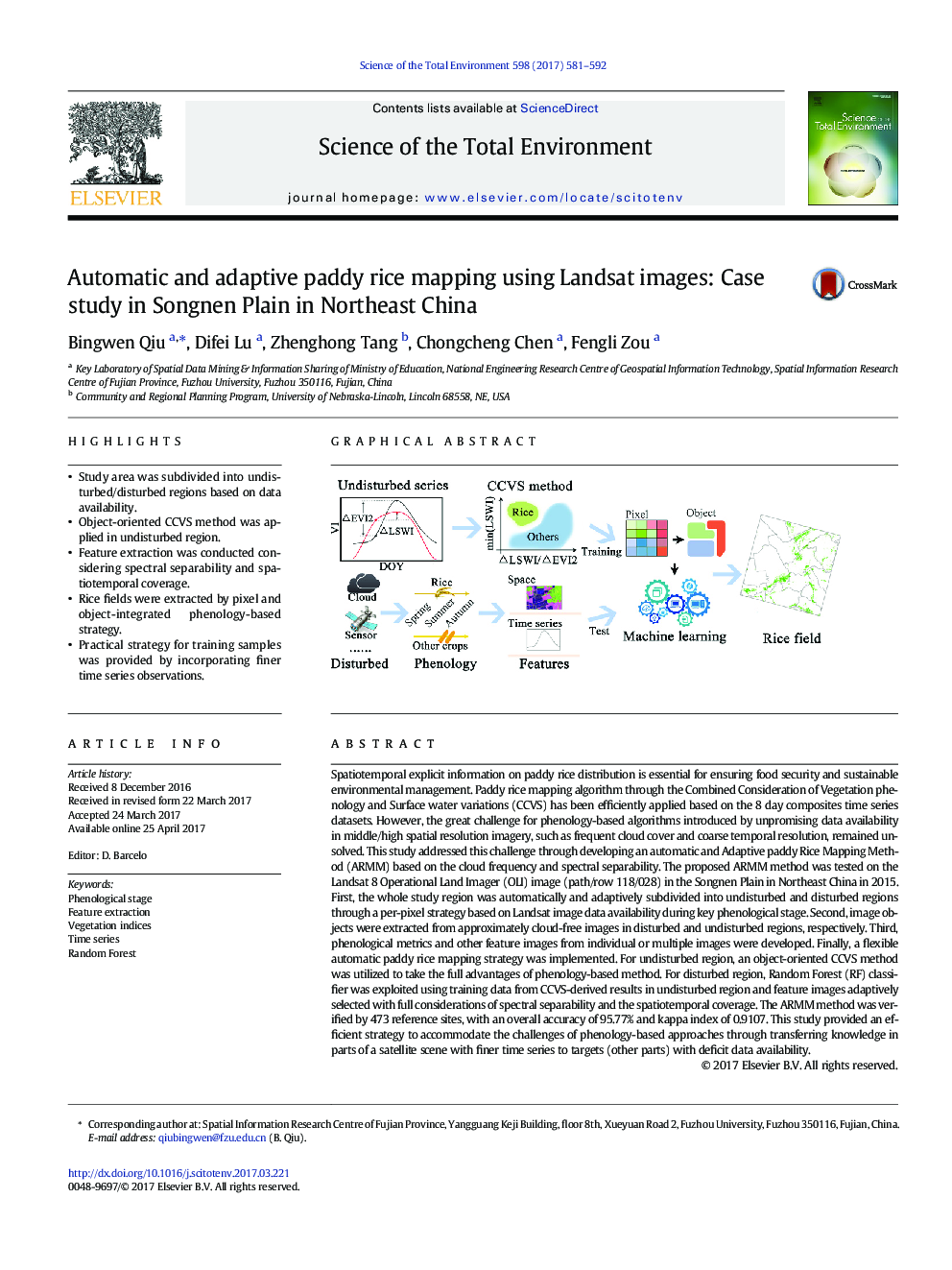| کد مقاله | کد نشریه | سال انتشار | مقاله انگلیسی | نسخه تمام متن |
|---|---|---|---|---|
| 5750971 | 1619699 | 2017 | 12 صفحه PDF | دانلود رایگان |
- Study area was subdivided into undisturbed/disturbed regions based on data availability.
- Object-oriented CCVS method was applied in undisturbed region.
- Feature extraction was conducted considering spectral separability and spatiotemporal coverage.
- Rice fields were extracted by pixel and object-integrated phenology-based strategy.
- Practical strategy for training samples was provided by incorporating finer time series observations.
Spatiotemporal explicit information on paddy rice distribution is essential for ensuring food security and sustainable environmental management. Paddy rice mapping algorithm through the Combined Consideration of Vegetation phenology and Surface water variations (CCVS) has been efficiently applied based on the 8Â day composites time series datasets. However, the great challenge for phenology-based algorithms introduced by unpromising data availability in middle/high spatial resolution imagery, such as frequent cloud cover and coarse temporal resolution, remained unsolved. This study addressed this challenge through developing an automatic and Adaptive paddy Rice Mapping Method (ARMM) based on the cloud frequency and spectral separability. The proposed ARMM method was tested on the Landsat 8 Operational Land Imager (OLI) image (path/row 118/028) in the Songnen Plain in Northeast China in 2015. First, the whole study region was automatically and adaptively subdivided into undisturbed and disturbed regions through a per-pixel strategy based on Landsat image data availability during key phenological stage. Second, image objects were extracted from approximately cloud-free images in disturbed and undisturbed regions, respectively. Third, phenological metrics and other feature images from individual or multiple images were developed. Finally, a flexible automatic paddy rice mapping strategy was implemented. For undisturbed region, an object-oriented CCVS method was utilized to take the full advantages of phenology-based method. For disturbed region, Random Forest (RF) classifier was exploited using training data from CCVS-derived results in undisturbed region and feature images adaptively selected with full considerations of spectral separability and the spatiotemporal coverage. The ARMM method was verified by 473 reference sites, with an overall accuracy of 95.77% and kappa index of 0.9107. This study provided an efficient strategy to accommodate the challenges of phenology-based approaches through transferring knowledge in parts of a satellite scene with finer time series to targets (other parts) with deficit data availability.
332
Journal: Science of The Total Environment - Volume 598, 15 November 2017, Pages 581-592
